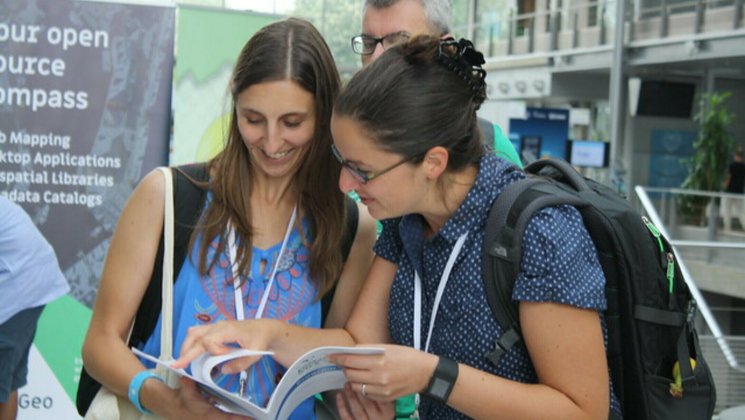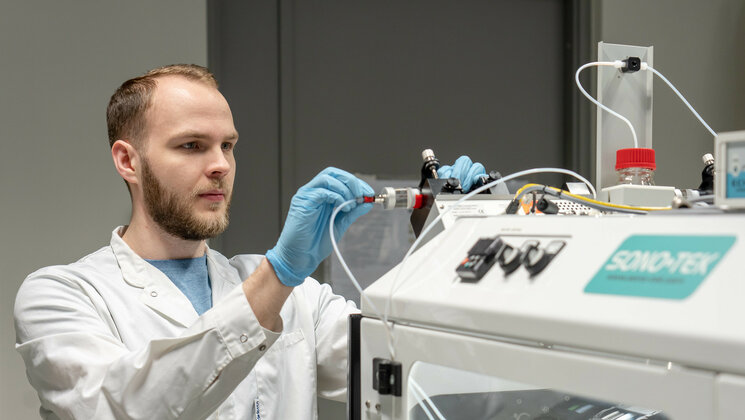-
Faculty of Arts and HumanitiesDean's Office, Faculty of Arts and HumanitiesJakobi 2, r 116-121 51005 Tartu linn, Tartu linn, Tartumaa EST0Institute of History and ArchaeologyJakobi 2 51005 Tartu linn, Tartu linn, Tartumaa EST0Institute of Estonian and General LinguisticsJakobi 2, IV korrus 51005 Tartu linn, Tartu linn, Tartumaa EST0Institute of Philosophy and SemioticsJakobi 2, III korrus, ruumid 302-337 51005 Tartu linn, Tartu linn, Tartumaa EST0Institute of Cultural ResearchÜlikooli 16 51003 Tartu linn, Tartu linn, Tartumaa EST0Institute of Foreign Languages and CulturesLossi 3 51003 Tartu linn, Tartu linn, Tartumaa EST0School of Theology and Religious StudiesÜlikooli 18 50090 Tartu linn, Tartu linn, Tartumaa EST0Viljandi Culture AcademyPosti 1 71004 Viljandi linn, Viljandimaa EST0Professors emeriti, Faculty of Arts and Humanities0Associate Professors emeriti, Faculty of Arts and Humanities0Faculty of Social SciencesDean's Office, Faculty of Social SciencesLossi 36 51003 Tartu linn, Tartu linn, Tartumaa EST0Institute of EducationJakobi 5 51005 Tartu linn, Tartu linn, Tartumaa EST0Johan Skytte Institute of Political StudiesLossi 36, ruum 301 51003 Tartu linn, Tartu linn, Tartumaa EST0School of Economics and Business AdministrationNarva mnt 18 51009 Tartu linn, Tartu linn, Tartumaa EST0Institute of PsychologyNäituse 2 50409 Tartu linn, Tartu linn, Tartumaa EST0School of LawNäituse 20 - 324 50409 Tartu linn, Tartu linn, Tartumaa EST0Institute of Social StudiesLossi 36 51003 Tartu linn, Tartu linn, Tartumaa EST0Narva CollegeRaekoja plats 2 20307 Narva linn, Ida-Virumaa EST0Pärnu CollegeRingi 35 80012 Pärnu linn, Pärnu linn, Pärnumaa EST0Professors emeriti, Faculty of Social Sciences0Associate Professors emeriti, Faculty of Social Sciences0Faculty of MedicineDean's Office, Faculty of MedicineRavila 19 50411 Tartu linn, Tartu linn, Tartumaa ESTInstitute of Biomedicine and Translational MedicineBiomeedikum, Ravila 19 50411 Tartu linn, Tartu linn, Tartumaa ESTInstitute of PharmacyNooruse 1 50411 Tartu linn, Tartu linn, Tartumaa ESTInstitute of DentistryL. Puusepa 1a 50406 Tartu linn, Tartu linn, Tartumaa ESTInstitute of Clinical MedicineL. Puusepa 8 50406 Tartu linn, Tartu linn, Tartumaa ESTInstitute of Family Medicine and Public HealthRavila 19 50411 Tartu linn, Tartu linn, Tartumaa ESTInstitute of Sport Sciences and PhysiotherapyUjula 4 51008 Tartu linn, Tartu linn, Tartumaa ESTProfessors emeriti, Faculty of Medicine0Associate Professors emeriti, Faculty of Medicine0Faculty of Science and TechnologyDean's Office, Faculty of Science and TechnologyVanemuise 46 - 208 51003 Tartu linn, Tartu linn, Tartumaa ESTInstitute of Computer ScienceNarva mnt 18 51009 Tartu linn, Tartu linn, Tartumaa ESTInstitute of GenomicsRiia 23b/2 51010 Tartu linn, Tartu linn, Tartumaa ESTEstonian Marine Institute0Institute of PhysicsInstitute of ChemistryRavila 14a 50411 Tartu linn, Tartu linn, Tartumaa EST0Institute of Mathematics and StatisticsNarva mnt 18 51009 Tartu linn, Tartu linn, Tartumaa EST0Institute of Molecular and Cell BiologyRiia 23, 23b - 134 51010 Tartu linn, Tartu linn, Tartumaa ESTTartu ObservatoryObservatooriumi 1 61602 Tõravere alevik, Nõo vald, Tartumaa EST0Institute of TechnologyNooruse 1 50411 Tartu linn, Tartu linn, Tartumaa ESTInstitute of Ecology and Earth SciencesJ. Liivi tn 2 50409 Tartu linn, Tartu linn, Tartumaa ESTProfessors emeriti, Faculty of Science and Technology0Associate Professors emeriti, Faculty of Science and Technology0Institute of BioengineeringArea of Academic SecretaryHuman Resources OfficeUppsala 6, Lossi 36 51003 Tartu linn, Tartu linn, Tartumaa EST0Area of Head of FinanceFinance Office0Area of Director of AdministrationInformation Technology Office0Administrative OfficeÜlikooli 17 (III korrus) 51005 Tartu linn, Tartu linn, Tartumaa EST0Estates Office0Marketing and Communication OfficeÜlikooli 18, ruumid 102, 104, 209, 210 50090 Tartu linn, Tartu linn, Tartumaa EST0Area of RectorRector's Strategy OfficeInternal Audit OfficeArea of Vice Rector for Academic AffairsOffice of Academic Affairs0University of Tartu Youth AcademyUppsala 10 51003 Tartu linn, Tartu linn, Tartumaa EST0Student Union OfficeÜlikooli 18b 51005 Tartu linn, Tartu linn, Tartumaa EST0Centre for Learning and TeachingArea of Vice Rector for ResearchUniversity of Tartu LibraryW. Struve 1 50091 Tartu linn, Tartu linn, Tartumaa EST0Grant OfficeArea of Vice Rector for DevelopmentCentre for Entrepreneurship and InnovationNarva mnt 18 51009 Tartu linn, Tartu linn, Tartumaa EST0University of Tartu Natural History Museum and Botanical GardenVanemuise 46 51003 Tartu linn, Tartu linn, Tartumaa EST0International Cooperation and Protocol Office0University of Tartu MuseumLossi 25 51003 Tartu linn, Tartu linn, Tartumaa EST0
Tuul Sepp: eight unrealised business ideas for restoring natural habitats in the city
According to Tuul Sepp, Professor in Animal Ecology at the University of Tartu, citizens are increasingly aware of the need to restore urban habitats. She proposes business ideas that could be good for nature as well as for people, in an opinion piece published in Delfi Roheportaal.
Increasingly, urban citizens are willing to get involved in urban nature conservation, but there is a lack of products and services on the market to support the restoration of local biodiversity and nature-based solutions. In my lecture at the Startup Day business festival, I tried to instil in the audience a number of business ideas for developing nature-based entrepreneurship in the city environment.
1. Consultancy and training courses on creating a biodiverse city
The first step is to raise people's awareness of urban nature. Even though this is already quite a common practice, I still see a strong demand for services providing consultancy, landscape architectural planning and training on this subject. For example, one could benefit from training on how to design the green space around their home or office to best support local species.
The city of Tallinn recently organised a citizen assembly where citizens were able to have their say on how the city should look. Everyone understood why we need urban nature. So we already have customers who are prepared to use products and services that do not yet exist.
2. Sale of local plant species and seeds
I would recommend setting up businesses selling pot plants and grass seed mixes from local species. At the moment, I only know of one or two companies selling local grass seeds. It is the native plant species that best support the local ecosystem, creating a strong community that will persist in Estonian conditions for years or even decades.
These plant communities are also the main support for native insects, which in turn support our birds, bats, etc. However, it is currently very difficult to find plants and seeds on the shelves to plant in urban gardens and parks, and to distinguish between native and non-native species.
Most of the plants we can buy in garden shops are in peat substrate, with most of the peat coming from bogs in Estonia. Peat, on the other hand, should stay in the bogs to support our local biodiversity and keep carbon in the soil. Peat substrate could be at least partly replaced by compost.
I think most people who want to work in their own garden care about nature. If they had the opportunity to choose services and products that benefit local biodiversity, such as plants and seeds, they would.
3. Designed habitats for local species
The urban landscape lacks all kinds of small structures that would provide habitats for local species. Stumps, fallen logs and piles of leaves and twigs are good places for insects, small mammals and small birds. They are not expensive at all and just need to look nice in the city environment. It is reasonable to think that people would buy stumps or logs that are designed to look beautiful, like a bench or a small table, and at the same time provide a habitat for insects, moss or lichens.
4. Wild playgrounds
Playgrounds nowadays leave little room for children's creativity and imagination. I have come up with the idea of wild urban playgrounds where children can play with leaves and twigs, climb trees and make mud pies.
All these activities develop many important skills in children, as well as their ability to better resist and fight illness and allergies. I am pleased that the city of Tartu has shown interest in the idea. Currently awaiting a funding decision is a city project involving Rusty Keeler, who runs a successful wild playground design and risk-reward training company in the United States.
5. Tall grass maintenance
One of the obstacles to the creation of a biodiverse green space in the city is the lack of a service that would allow the grass to grow a little taller. At the moment, such a maintenance service is not offered due to a lack of equipment for cutting high grass and hay, and a lack of knowledge about how to use the cut grass afterwards.
We need to figure out what to do with the grass cut from urban meadows. It could certainly be used for something, such as compost or energy production. There are many possible ideas to work with. Perhaps the peat substrate collected from the bogs could be at least partly replaced by compost of hay mown in urban meadows.
6. Mowing service with a scythe
In addition to the previous idea, I expect that mowing with a scythe will also be offered as a service as an alternative to mowing with a lawnmower. Anyone can buy a scythe and mow with it, but nowadays many people do not want to and do not know how. Such a service could therefore be offered.
7. Sheep for rent
An even more organic landscaping service could be the possibility to hire sheep to mow the lawn. For hundreds of years, lawns were mowed in this way, for example in Estonian manor houses. And we know that the manor gardens were really spectacular: the lawns were beautiful and full of flowers.
8. Tools for people to observe and learn about urban biodiversity
We need to learn to recognise native and non-native species, as well as to appreciate native species and how to care for them so that they survive in the city. For example, on the University of Tartu Natural History Museum's PlutoF platform and the PlutoF Go app, people can upload photos of animals and plants they see in the city. If you do not recognise them yourself, you can send the photos to people who do. In this way, people learn which species are native, which are rare, which should be protected and which species should not be here at all.
Read more similar news






